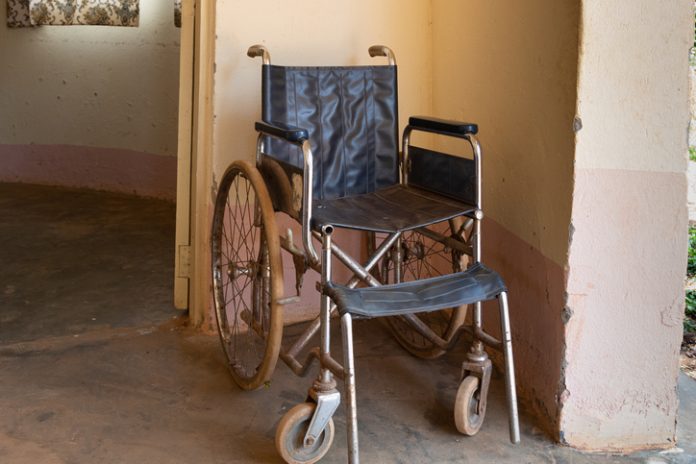When safety is on the line, cutting corners on mobility equipment isn’t just unwise—it can be life-threatening. At Mobility Plus Northfield, we’ve witnessed the devastating consequences when individuals choose bargain mobility products over quality, safety-tested equipment. While the initial savings might seem appealing, the hidden safety hazards lurking in cheap mobility equipment can put users at serious risk.
The Real Cost of Safety Shortcuts
Mobility equipment isn’t just about convenience—it’s about trusting your safety to a device that must perform reliably every single day. When manufacturers cut costs to offer rock-bottom prices, safety features are often the first casualties. These compromises create hidden dangers that users discover only when it’s too late.
The most alarming aspect of bargain mobility equipment is that safety deficiencies aren’t immediately apparent. A mobility scooter might operate normally for weeks or months before a critical component fails. A lift chair might seem sturdy until its lifting mechanism malfunctions while someone is using it. These delayed failures create a false sense of security that can lead to devastating accidents.
Quality mobility equipment undergoes rigorous safety testing and meets strict industry standards. Every component is designed to withstand years of daily use under various conditions. Manufacturers invest heavily in research and development to identify potential failure points and engineer solutions. This comprehensive approach to safety simply doesn’t exist in the bargain equipment market.
Structural Integrity Failures
The foundation of any mobility device is its structural integrity—the frame, joints, and weight-bearing components that keep users safe. Cheap mobility equipment often uses inferior materials and substandard manufacturing processes that compromise this critical safety element.
We’ve seen mobility scooter frames crack under normal use, wheelchairs with wheels that separate from their mounts, and lift chairs whose mechanisms fail during operation. These structural failures don’t announce themselves with warning signs. One moment the equipment seems fine, the next moment a user is facing a dangerous fall or becoming trapped in a malfunctioning device.
Quality manufacturers use tested materials like aircraft-grade aluminum and high-strength steel alloys. They employ precise welding techniques and reinforce stress points based on extensive testing. Bargain manufacturers often substitute cheaper materials and use simplified construction methods that create weak points throughout the device.
The weight capacity ratings on cheap equipment are particularly concerning. While a device might claim to support 300 pounds, the actual safety margin may be dangerously thin. Quality equipment builds in substantial safety buffers, so a 300-pound capacity device can actually handle much more. Bargain equipment often operates at the absolute limit of its structural capability, leaving no room for unexpected stresses.
Electrical System Hazards
Battery-powered mobility equipment creates unique electrical safety challenges that quality manufacturers address through careful design and testing. Cheap mobility devices often cut corners on electrical safety, creating risks ranging from sudden power loss to potential fire hazards.
Inadequate battery management systems represent one of the most serious risks. Quality mobility equipment includes sophisticated charging systems that prevent overcharging, monitor battery health, and shut down safely when problems occur. Bargain devices often use basic charging systems that can overcharge batteries, leading to overheating, swelling, or even battery fires.
We’ve encountered situations where cheap mobility scooters experienced electrical failures that left users stranded in unsafe locations. Poor wiring practices can create intermittent connection problems that cause sudden power loss without warning. Control systems that aren’t properly protected against moisture or temperature extremes can malfunction unpredictably.
The consequences extend beyond mere inconvenience. Sudden power loss while crossing a street or navigating an incline can create life-threatening situations. Electrical fires can spread rapidly and produce toxic fumes, particularly dangerous for users who may have difficulty evacuating quickly.
Brake System Deficiencies
Perhaps no safety feature is more critical than reliable braking systems, yet this is an area where cheap mobility equipment frequently fails to meet adequate safety standards. The braking systems on quality mobility devices undergo extensive testing under various conditions to ensure consistent, reliable stopping power.
Bargain mobility scooters often use simplified brake systems that lack the redundancy and reliability of quality equipment. We’ve seen cases where brake cables stretch or snap, electromagnetic brakes fail due to poor electrical connections, and brake pads wear prematurely due to inferior materials.
The most dangerous brake failures occur on inclines or when users need to stop quickly. A mobility scooter whose brakes fail while descending a ramp can quickly become uncontrollable. Power wheelchairs with inadequate parking brakes can roll unexpectedly, particularly on uneven surfaces.
Quality mobility equipment includes multiple safety systems that work together. If one brake system experiences problems, backup systems engage to maintain user safety. These redundant safety features simply don’t exist in most bargain equipment, leaving users vulnerable to catastrophic brake failures.
Control System Malfunctions
Modern mobility equipment relies on sophisticated control systems that translate user inputs into safe, predictable movement. Quality manufacturers invest heavily in developing control systems that respond consistently and include safety features to prevent dangerous operation.
Cheap mobility devices often use simplified control systems that lack essential safety features. We’ve encountered bargain scooters that continue moving when the user releases the control lever, power wheelchairs that respond unpredictably to joystick inputs, and lift chairs that don’t stop properly when the user releases the control button.
These control system failures can cause sudden acceleration, inability to stop, or unpredictable changes in direction. For users with limited mobility or reaction time, these malfunctions can quickly lead to serious accidents. The psychological impact is equally significant—users lose confidence in their equipment and may become afraid to use it at all.
Quality control systems include multiple safety features like automatic shut-offs, speed limiting based on turning radius, and fail-safe mechanisms that stop the device if problems are detected. These sophisticated safety systems require significant engineering investment that bargain manufacturers simply won’t make.
Environmental Safety Concerns
Mobility equipment must operate safely in various environmental conditions, from indoor navigation around furniture to outdoor use in different weather conditions. Quality manufacturers test their equipment extensively to ensure safe operation across this wide range of scenarios.
Cheap mobility equipment often fails to account for environmental safety factors. Inadequate weather sealing can allow moisture to damage electrical systems, creating unpredictable failures. Poor lighting systems may not provide adequate visibility for safe navigation in low-light conditions. Inadequate traction control can make devices unsafe on wet or uneven surfaces.
We’ve seen bargain mobility scooters whose electrical systems failed after exposure to light rain, and wheelchairs whose batteries died prematurely due to inadequate protection from temperature extremes. These environmental failures often occur when users are away from home, creating potentially dangerous situations.
The Mobility Plus Northfield Difference
At Mobility Plus Northfield, we believe that safety isn’t negotiable when it comes to mobility equipment. Every product we carry has been thoroughly tested by reputable manufacturers who stand behind their safety records. We work exclusively with companies that prioritize user safety over profit margins.
Our commitment to safety extends beyond the initial sale. We provide professional fitting and setup to ensure equipment operates safely in your specific environment. Our certified technicians understand the safety implications of proper maintenance and can identify potential problems before they become dangerous.
We also believe in education. Our team takes time to explain the safety features of your equipment and how to use them effectively. We want every customer to understand not just how their equipment works, but how to use it safely in various situations.
The peace of mind that comes with quality, safety-tested mobility equipment is invaluable. When you choose equipment from Mobility Plus Northfield, you’re not just buying mobility—you’re investing in your safety and the confidence that comes with reliable, well-engineered equipment.
Your mobility and independence are too important to risk on bargain equipment. Choose safety, choose quality, choose equipment that will support your independence without compromising your wellbeing.
Mobility Plus Northfield carries only safety-tested mobility equipment from reputable manufacturers. Visit our showroom to experience the difference that quality safety engineering makes in mobility solutions. More information about Mobility Plus Northfield here.
Discover more from Northeast Ohio News
Subscribe to get the latest posts sent to your email.











